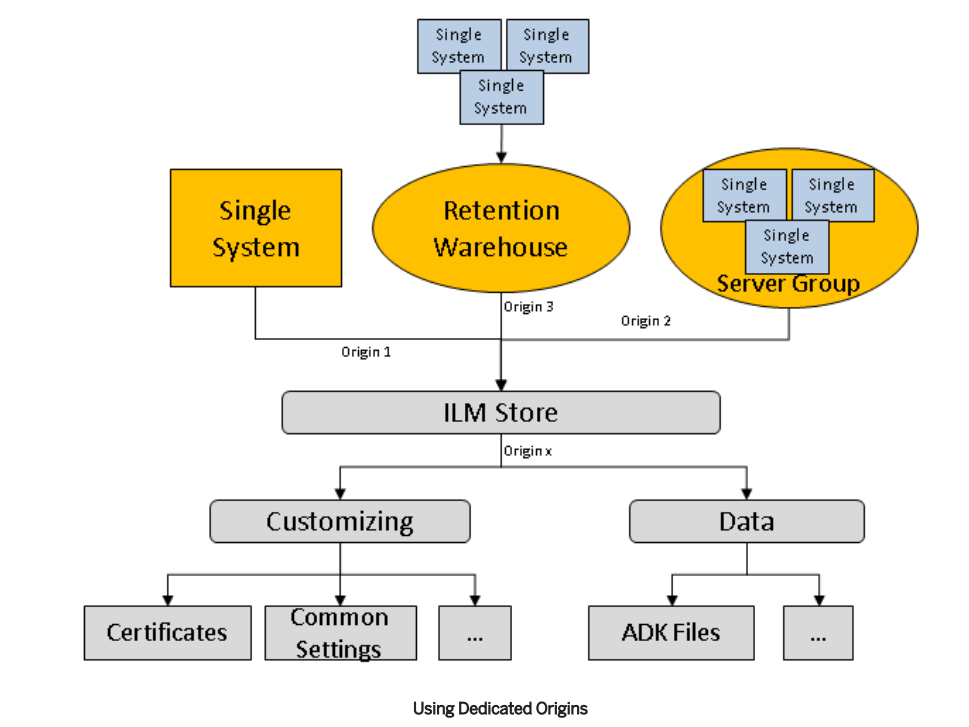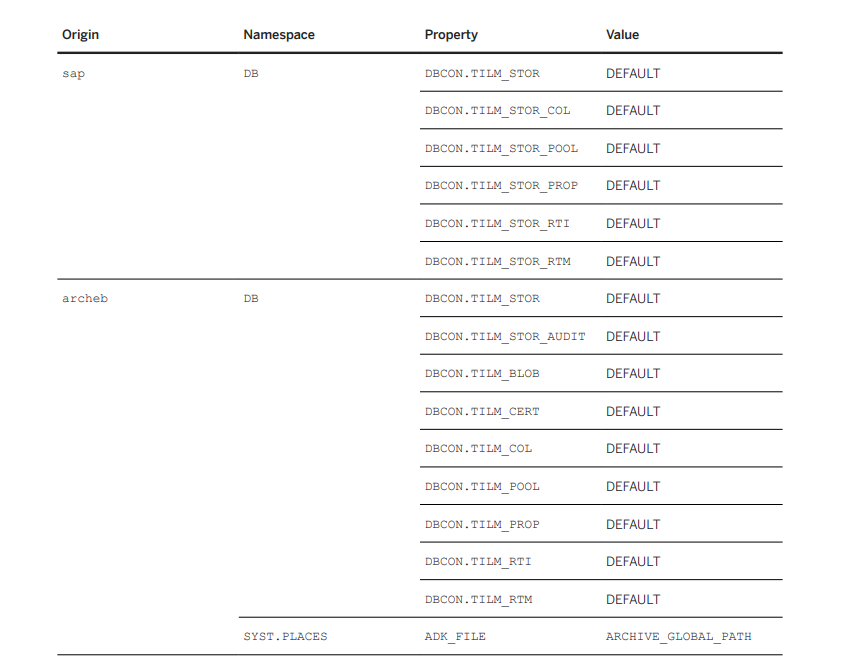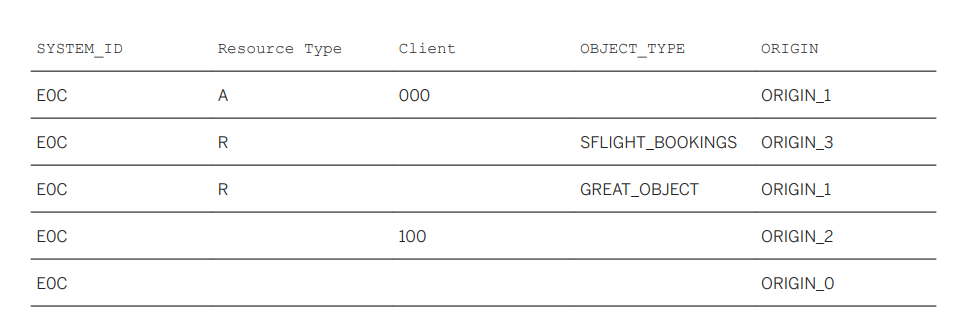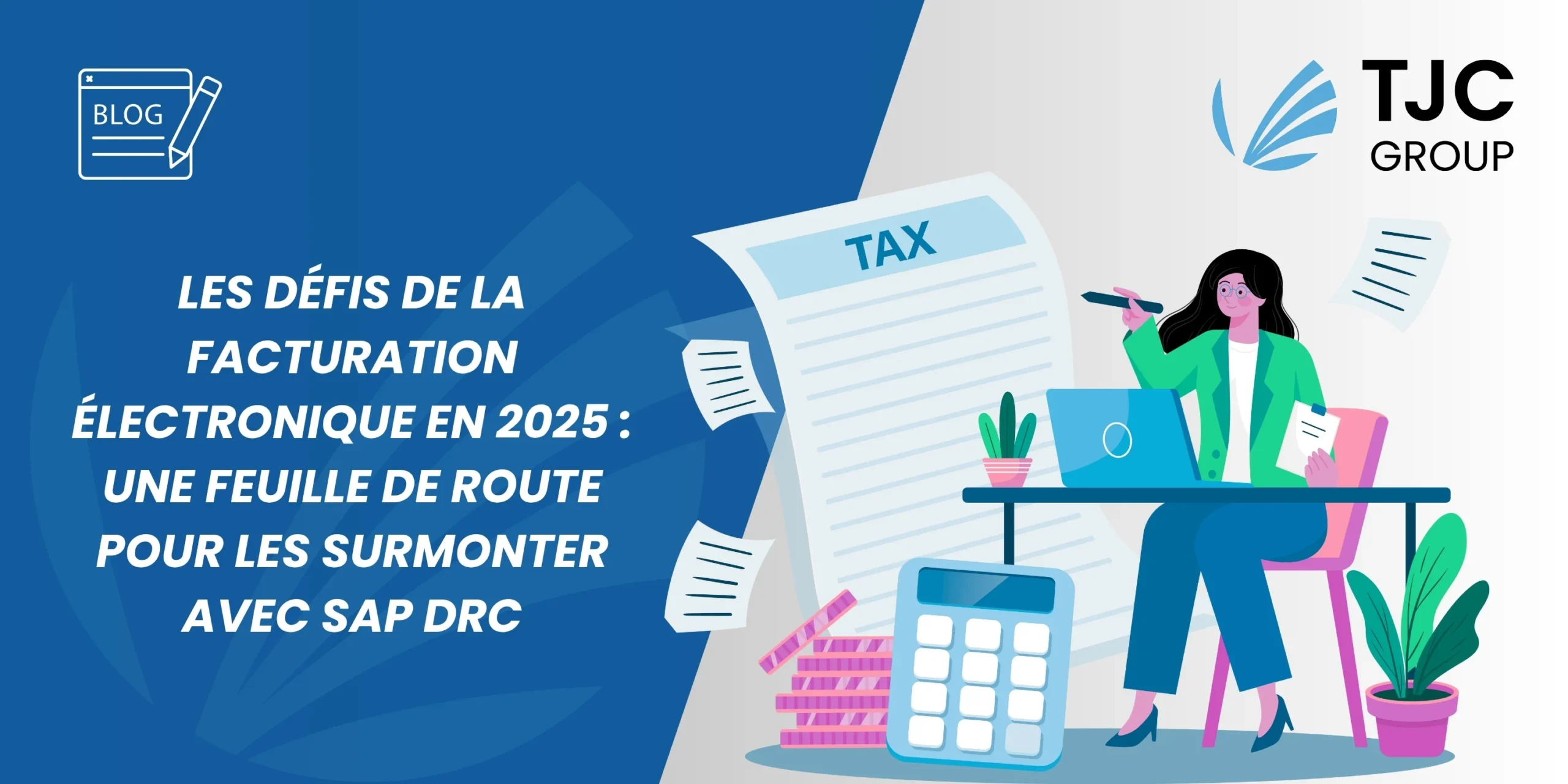
Il existe de nombreux facteurs concernant et contribuant au magasin SAP ILM que les utilisateurs doivent connaître. L’un d’entre eux est le type d’origine qui permet de déterminer la source de données. Dans ce blog, nous allons donner à nos lecteurs un aperçu de ces facteurs. Lisez la suite pour en savoir plus !
Table des matières
- 1. Introduction
- 2. Qu’est-ce qu’une origine dans le magasin SAP ILM?
- 3. Types d’origine dans le magasin ILM
- 4. Personnalisation du magasin ILM et de la source de données à l’aide de
- 6. Utilisation de l’origine conformément au système
- 7. Tables de routage
- 8. Configuration des clients et des origines dans le magasin ILM
- 9. Le mot de la fin
1. Introduction
Dans le blog, tout ce qu’il faut savoir sur le magasin SAP ILM , nous avons vu en quoi consiste ce magasin. Pour les non-initiés, le SAP ILM Store permet aux utilisateurs d’utiliser le propre magasin de SAP pour le processus de conservation des données, c’est-à-dire que les utilisateurs peuvent archiver et stocker ces fichiers archivés efficacement et facilement. Le magasin est un composant de la gestion du cycle de vie de l’information, qui répond aux exigences de BC-ILM 3.1 pour ses systèmes de stockage conformes. Grâce à ce magasin, les utilisateurs peuvent stocker des fichiers archivés tout en les indexant dans une base de données à l’aide des normes de l’interface WebDAV.
2. Qu’est-ce qu’une origine dans le magasin SAP ILM?
L’origine est l’élément central de la configuration du magasin ILM qui aide le magasin à déterminer l’origine de ses données, ou la source des données. Tous les systèmes qui utilisent le magasin ILM identifient la source de données dans le contexte d’une origine, qui peut être n’importe quoi. Par exemple, l’origine peut être un objet ILM, un système individuel ou un grand groupe de systèmes. L’origine comprend une source de données qui aide à personnaliser le magasin ILM, ainsi que des clés pour toutes les données combinées. En outre, l’origine permet également de traiter les données des sources de manière unique, par exemple, les données du groupe de serveurs productifs peuvent être traitées différemment de celles de l’entrepôt de rétention ILM. Mais pour ce faire, il est essentiel de lier chaque demande au magasin ILM avec l’origine requise.

Source : Guide de configuration du magasin : SAP ILM Guide de configuration du magasin
3. Types d’origine dans le magasin ILM
Maintenant que vous avez une idée de ce qu’est une origine dans le magasin ILM, nous allons nous pencher sur ses types et ses définitions. Il existe deux principaux types d’origine dans le magasin ILM : – l’origine d’un produit.
1. Origine administrative
2. Origine opérationnelle
Toutefois, il existe un troisième type d’origine, appelé origine technique, qui est exclusivement utilisé par SAP.
3.1 Origine administrative
Avec l’origine administrative, les paramètres permettant d’activer le traitement des données dans le magasin ILM sont créés, chaque client se voyant attribuer une origine unique. Cette origine est toujours une sorte de groupe pour plusieurs origines opérationnelles. Toutefois, au sein de l’origine administrative elle-même, les utilisateurs ne peuvent ni stocker ni traiter de données. En revanche, ils peuvent utiliser les paramètres de personnalisation de cette origine comme valeurs par défaut pour les origines opérationnelles attribuées.
Compliqué à comprendre ? Voici un exemple de SAP expliquant la même chose.

Cela dit, avec l’origine administrative, les utilisateurs peuvent effectuer des réglages supplémentaires, ce qui n’est pas possible dans le cadre d’une personnalisation normale. Les utilisateurs peuvent également définir les paramètres dans le Customizing pour les origines opérationnelles assignées en utilisant l’origine administrative. Toutefois, les administrateurs ne peuvent modifier que les paramètres pour lesquels ils sont autorisés. Les utilisateurs peuvent définir les paramètres de l’origine administrative dans le Guide d’implémentation du Customizing de SAP sous –
ABAP Platform Implementation Guide > Application Server > Basis Services > Information Lifecycle Management > ILM Store > Define Settings for Administrative Customising.
3.2 Origine opérationnelle
L’origine opérationnelle est utilisée pour traiter les données, comme le stockage de fichiers, l’attribution de propriétés, la modification ou la suppression de propriétés, etc. Par conséquent, chaque demande de traitement est exécutée dans le contexte d’une origine opérationnelle, ce qui signifie que chaque origine doit être affectée à une seule origine administrative. L’origine est un nom librement défini pour indiquer la source de données à utiliser pour le traitement. Dans l’origine opérationnelle, les utilisateurs peuvent définir les paramètres dans le Guide d’implémentation du Customizing de SAP, sous –
ABAP Platform Implementation Guide > Application Server > Basis Services > Information Lifecycle Management > ILM Store > Define Settings for Operational Customising.
4. Personnalisation du magasin ILM et de la source de données à l’aide de
4.1 Personnalisation
Lors de la mise en place du magasin ILM, il est impératif de faire la différence entre la personnalisation opérationnelle et la personnalisation administrative. La personnalisation opérationnelle permet aux utilisateurs de contrôler le traitement des données, tandis que la personnalisation administrative les aide à définir tous les paramètres nécessaires au traitement des données avec ILM Store. En fait, dans le cadre de la personnalisation administrative, les utilisateurs peuvent utiliser les origines administratives pour installer ILM Store. En outre, les paramètres de personnalisation définis par les utilisateurs à l’aide de l’origine administrative sont traités comme des valeurs par défaut pour les origines opérationnelles attribuées si elles ne sont pas définies. Les utilisateurs peuvent utiliser les origines opérationnelles pour contrôler le traitement des données.
4.2 Source des données
Grâce à l’origine, la source des données peut être déterminée de manière unique. Pour identifier la source des données, le magasin ILM utilise les informations transférées à l’aide de l’URI du fichier du kit de développement d’archives (ADK). Pour déterminer la source des données, l’accès aux scénarios suivants est nécessaire –
4.2.1 Scénario simple – Si les données du système sont fournies au sein d’un réseau, la source des données peut être identifiée de manière unique.
4.2.2 Scénario complexe – Dans ce scénario, les utilisateurs peuvent déterminer l’origine de la source de données pour le client et en informer le magasin ILM. Toutefois, pour ce faire, ils doivent exécuter la mise en œuvre du BAdI BADI_ILM_STOR_CLIENT sur le système SRS (Storage and Retention Service). Cette entrée aide à déterminer l’origine à utiliser, ce qui permet aux utilisateurs de la configurer dans le Customizing du magasin ILM correspondant.
5. Personnalisation des valeurs pour les origines SAP
Pour les systèmes SAP, il existe des origines spéciales que SAP fournit à l’avance, ce qui nécessite de procéder à des réglages supplémentaires.
- Depuis la version SAP NW 7.40 SP13, l’origine SAP doit être définie de manière plus détaillée en raison des exigences de sécurité relatives à la gestion des fichiers.
- Pour l’origine archeb, les paramètres doivent être ajustés en conséquence car tous les programmes de test sont exécutés dans ce contexte.
- Il n’y a pas de paramètres nécessaires pour l’origine arthurdent car ils sont utilisés pour les tests unitaires.
Note : Veuillez garder la note suivante à l’esprit : – DEFAULT signifie que la base de données locale est utilisée. Bien que cela convienne pour origin sap, pour archeb origin les utilisateurs doivent utiliser leur connexion cible pour le tester correctement.
6. Utilisation de l’origine conformément au système
Pour stocker les fichiers archivés, les utilisateurs doivent créer leur propre origine. L’une des possibilités consiste à mettre en œuvre le BAdI ILM DB Store : Client Functions of the ILM DB Store (BADI_ILM_STOR_CLIENT) séparément sur chaque système. Ici, la méthode DETERMINE_STORE_ORIGIN fournit l’origine, qui est ensuite envoyée au magasin ILM.
Note : Pour que cette option fonctionne, le SRS doit être installé localement et les paramètres correspondants du SRS doivent être définis dans la transaction SARA.
La deuxième option pour créer sa propre origine pour le stockage des fichiers archivés est de mettre en œuvre le BAdl l’utilisateur est sur le système ILM Store au lieu du système du client, conformément au NetWeaver 740 SPS 13 ou 7.50 SPS 02. Cela permet aux utilisateurs d’avoir une seule source de vérité pour les origines.
7. Tables de routage
Les tables de routage prennent en charge la détermination de l’origine pour BAdl (BADl_ILM_STOR_CLIENT), qui est implémentée comme DEFAULT dans la classe CL_ILM_STOR_BADI_CLIENT. Ici, l’objectif principal est de diviser l’URI d’une ressource en ses parties identifiantes tout en essayant de trouver une entrée correspondante dans la table. Un URI de ressource a le schéma suivant –
Par exemple : L’URI ZA4/001/ad/online_shopping/aa/20240103/a005o5/a005o5-001bc_sbook.adk peut être divisé comme suit :
- Système : ZA4
- Client : 001
- Schéma : ad
- Type d’objet : achats en ligne
La table de routage avec la commande TILM_STOR_O_ROUT_ aura une entrée correspondant à ces champs, qui sont distingués par la nomenclature –
- SYSTEM_ID
- TYPE DE RESSOURCE
- CLIENT, TYPE D’OBJET
- ORIGINE
La table de routage peut être utilisée pour créer n’importe quelle combinaison, ce qui conduit ensuite à une origine, à condition que l’ID du système soit disponible.
8. Configuration des clients et des origines dans le magasin ILM
Pour configurer le client et les origines dans le magasin ILM, il suffit de suivre trois étapes simples.
1) Créez l’origine administrative puis le client.
2) Deuxièmement, créez l’origine opérationnelle.
3) Modifiez les origines en fonction des besoins.
9. Le mot de la fin
Avec SAP ILM Store, il devient plus facile de contrôler l’ensemble du cycle de vie des données de manière plus efficace tout en soutenant le processus au sein de l’environnement SAP sans aucune interface externe. Le groupe TJC, fort d’une expertise de plus de 25 ans, est devenu votre partenaire de confiance sur SAP ILM. Avec nous, vous pouvez –
- Conclure les processus ouverts depuis longtemps.
- Tirez parti de la réglementationRGPD pour revoir en profondeur les processus opérationnels.
- Supprimez les données non désirées ou non pertinentes dans vos systèmes SAP.
- Restez en conformité et préservez la réputation de votre entreprise.
TJC Group est l’un des principaux experts en matière de solutions efficaces d’archivage et d’extraction de données SAP. Pour en savoir plus sur nos solutions SAP ILM et d’archivage de données, contactez-nous dès aujourd’hui !












